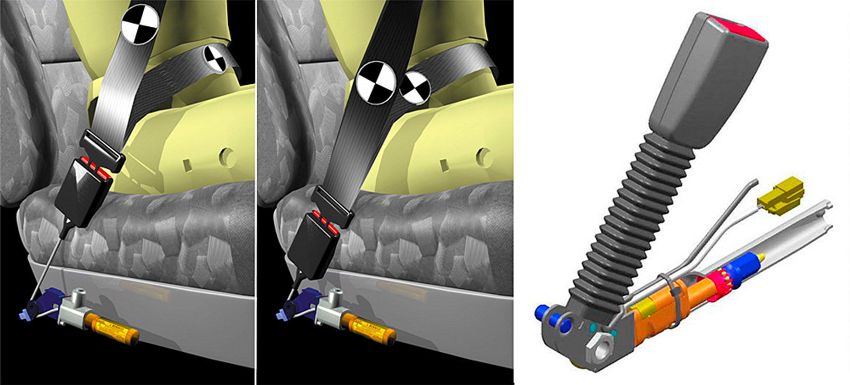
Seat belt pretensioner
Oftentimes, when we put on a seat belt, it does not always fit snugly against our body, and in the event of an accident, this can lead to potential danger.
In fact, the body will first be thrown forward at high speed and then suddenly blocked, so this phenomenon can cause injuries (especially at the chest level) to passengers.
In the worst case (excessively slow belt) it can even lead to complete inefficiency of the belts. And if our car were equipped with an airbag, the risks would increase significantly, since the two systems complement each other (see SRS), a malfunction of one of them will make the other ineffective.
There are two types of pretensioners, one is placed on the belt spool and the other is in the fixture that we use to attach and release the belt itself.
Let's take a closer look at the operation of the latter device:
- if our car hit an obstacle hard, the sensor would activate the seat belt pretensioner (phase 1)
- that in a few thousandths of a second (that is, even before our body was thrown forward) will pull the belt (phase 2), so the slowdown that our body will undergo will be the least sharp and strongest possible. Pay attention to the length of the black string.
With regard to the operation of what is placed in the drum, in practice the same happens, except that the tape is partially mechanically twisted by a small explosive charge.
Note: the pretensioners must be replaced after they have been activated!
